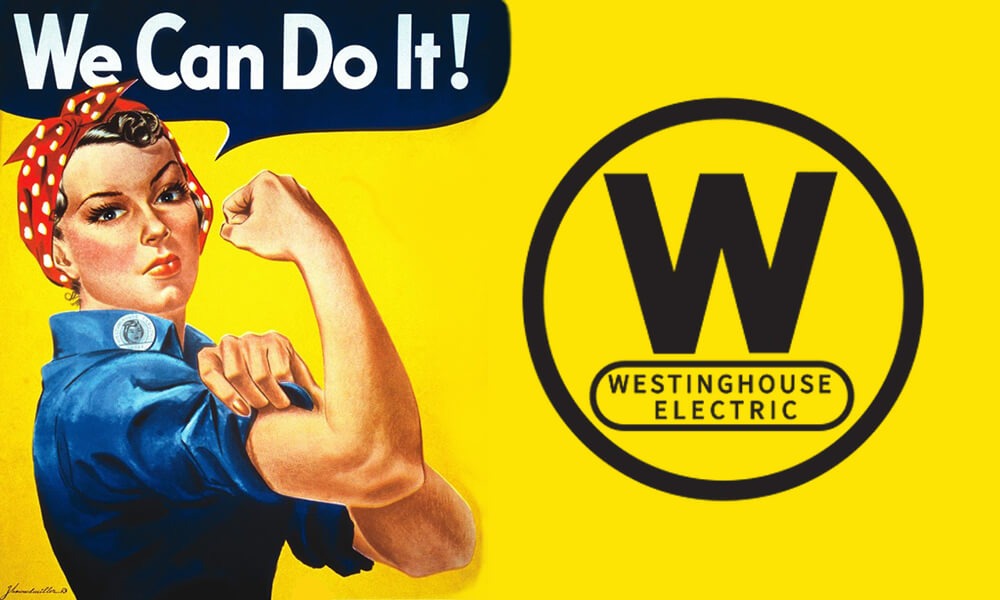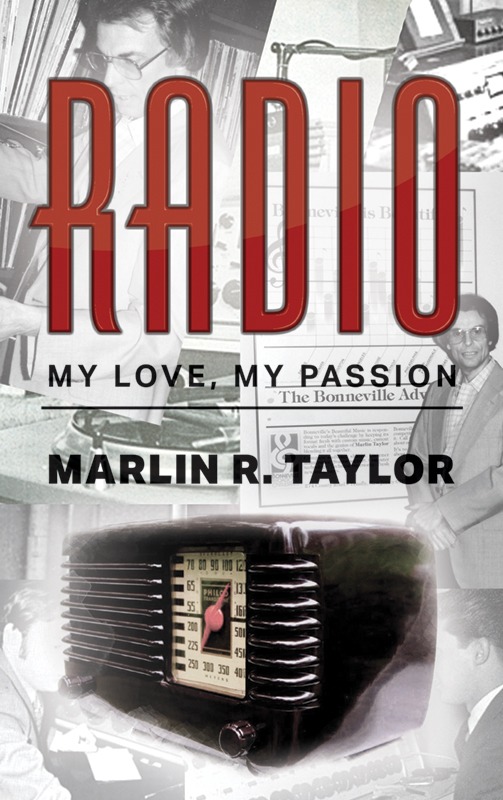The Westinghouse name, if remembered at all, likely means different things to different people, as it spanned so many aspects within the industrial and business world … all beginning in 1886 when George Westinghouse founded the Westinghouse Electric Corporation. Westinghouse even commissioned the above “We Can Do It!” poster.
Artist J. Howard Miller produced this work-incentive poster for the Westinghouse Electric & Manufacturing Company. Though displayed only briefly in Westinghouse factories, the poster in the later years has become one of the most famous icons of World War II.
National Muesum of American History
However, I’m not here to explore much more than a small part of one small part of this massive entity. A few days ago, I received the latest issue of Dials and Channels, the quarterly newsletter of the National Capital Radio & Television Museum, located in Bowie, Maryland, just outside of Washington, D. C.
The lead article, written by Brian Belanger, who is the Museum’s curator and the publication’s editor, addresses how — based on a book published by the Company itself — its radio stations operated and served their listeners during the period stated in the article’s headline:
And that is only the first half of Brian’s article — we’ll share the remainder in the next edition of the Musings.
Information and Trivia
Before I sign off here, let me share a few bits of information and trivia:
By far the best known of the Westinghouse stations, at least from a historic perspective, is KDKA in Pittsburgh — which is proclaimed to be the first United States radio station to officially begin broadcasting, although that has been challenged and questioned, especially by WWJ in Detroit … both launching in the latter part of 1920.
Still, following the end of World War I, in 1919 there were a number of amateur or experimental stations which had begun broadcasting entertainment-type programming. In fact, one of those stations was built and operated by a Westinghouse engineer named Frank Conrad. It’s said that Mr. Conrad’s broadcast activities caught the attention of Westinghouse management and inspired the Company’s entry into broadcasting and the construction of KDKA. Not long afterward, the stations listed at the beginning of Brian’s article would follow. Why were such cities as Springfield, Massachusetts, and Fort Wayne, Indiana, chosen — Westinghouse already had manufacturing or other operations in those communities!
Included as well in the Company’s building spree in the early 1920s was WJZ in Newark, New Jersey, but it was sold to the newly-founded Radio Corporation of America (RCA) — of which Westinghouse was a part-owner — within a couple of years. Also, KYW had its beginnings and was lauded for its quality programming in Chicago. However, come the 1930s, and the U. S. Government was not willing to assign it a good frequency, Westinghouse chose to close down the station and relocate it to Philadelphia, where it could occupy a “clear channel” frequency allowing for higher power and more expansive coverage.
While Brian lists six AM stations under Westinghouse ownership at the beginning of World War Two, in reality, there were only five. Why? Because the Springfield and Boston stations were really one! WBZ was initially founded in Springfield, but it was soon realized that with Boston being a much larger metropolitan area, establishing a studio there allowed the station to access better programming talent and the station soon began airing play-by-play broadcasts of the Boston professional sports teams as well. Next came the realization that there needed to be a local signal in Boston rather than relying on the marginal signal coming all the way across the state from Springfield, so a satellite or relay transmitter was placed in operation and called WBZA.
Later in the 1920s, technology advanced which allowed the two transmitters to operate on the same frequency in synchronous mode. (For those not technically inclined, when your receiver encounters two AM signals on the same frequency which are not synchronized — the norm — you cannot distinguish either.) As time passed, a new high-powered transmitter was installed for its WBZA satellite in Boston and, eventually, Westinghouse concluded that Boston was really the primary market; hence, government approval was attained for Boston to become the primary station and Springfield to be the satellite with the stations exchanging call letters at the same time. This arrangement continued at least into the 1960s.
As a young boy in the 1940s and 50s with my Philco radio (pictured on the cover of my memoir), I remember listening to the station and being intrigued by the dual cities and call letters.
In my next Musings, you’ll read the remainder of Brian Belanger’s article detailing how the Westinghouse stations — all major factors in their respective markets — were prepared to provide the latest War-related news and information to their listeners. Also, I’ll share more about Westinghouse and why the name has become nearly invisible, plus provide links for whoever would like to dig into the Company’s long history.




We on the West Coast claim that Charles Herrold was the first to broadcast radio.
Herrold and Ray Newby made a fifteen-watt voice transmitter that was heard twenty miles away. This was the first of many transmissions heard from the school — transmissions that would continue for many years.
The only radio communication that amateur radio operators of the period had ever heard was Morse code. So, it was quite a thrill for them to hear voices coming out of headphones that usually produced only dots and dashes. Newby said, “The voice was a shock to almost anyone who heard it for the first time.”
Herrold began to entertain listeners. He would discuss news items and read clippings from the newspaper, or play records from his phonograph. Regular programs were heard from the station as early as 1910. Herrold maintained that he was the first person to use radio for the purpose of broadcasting. Eventually, in early 1920, Herrold's enterprise became San Francisco station KQW, then KCBS.
This is the basis for KCBS’ claim to be the nation’s first broadcasting station. In order to be first, a station would have to be on the air earlier than any other, broadcasting on a regularly scheduled basis, and would have to be “broadcasting” in the truest sense of the word.
Everything suddenly fell apart for Herrold in 1921. Broadcasting was now an activity being practiced by a number of radio stations around the country, including pioneer stations KDKA, WHA and WWJ. The government finally decided to regulate this new kind of radio transmission. It decreed that all stations were to have a new type of license, known as “limited commercial,” and all stations were to share time on a single frequency, 360 meters.
The Herrold system of radio telephony would not work on wavelengths under 600, and the allocation of 360 meters by the government was fatal. Over two decades of work, and expenditures of over $80,000 and a lot of patents went on the scrap pile.
Herrold received a new broadcast license December 9, 1921. The call letters assigned were KQW. He constructed a tube-type transmitter and powered it with the city’s streetcar power lines. He constructed a vertical cage antenna, also a first, and was back on the air as KQW.